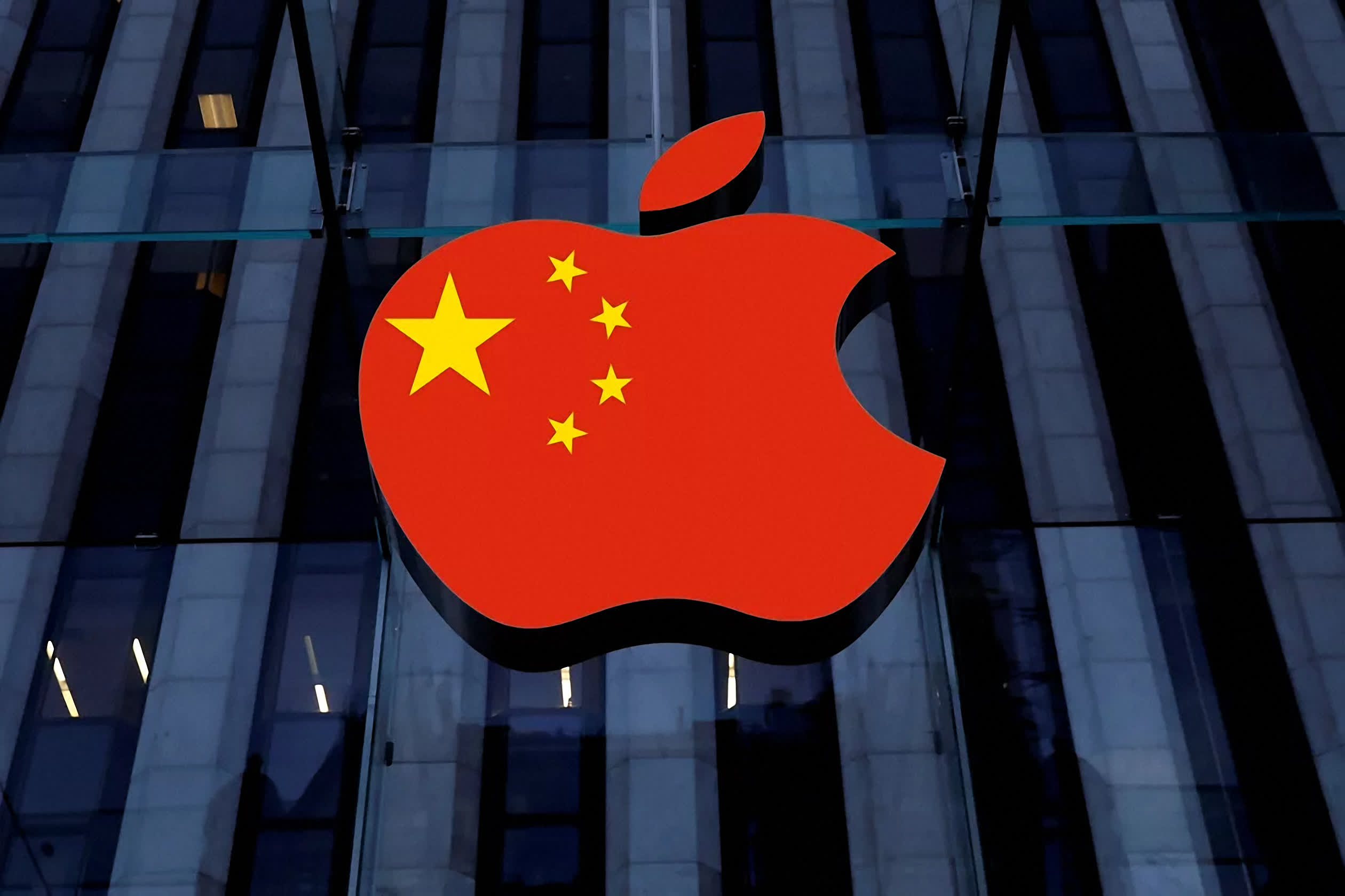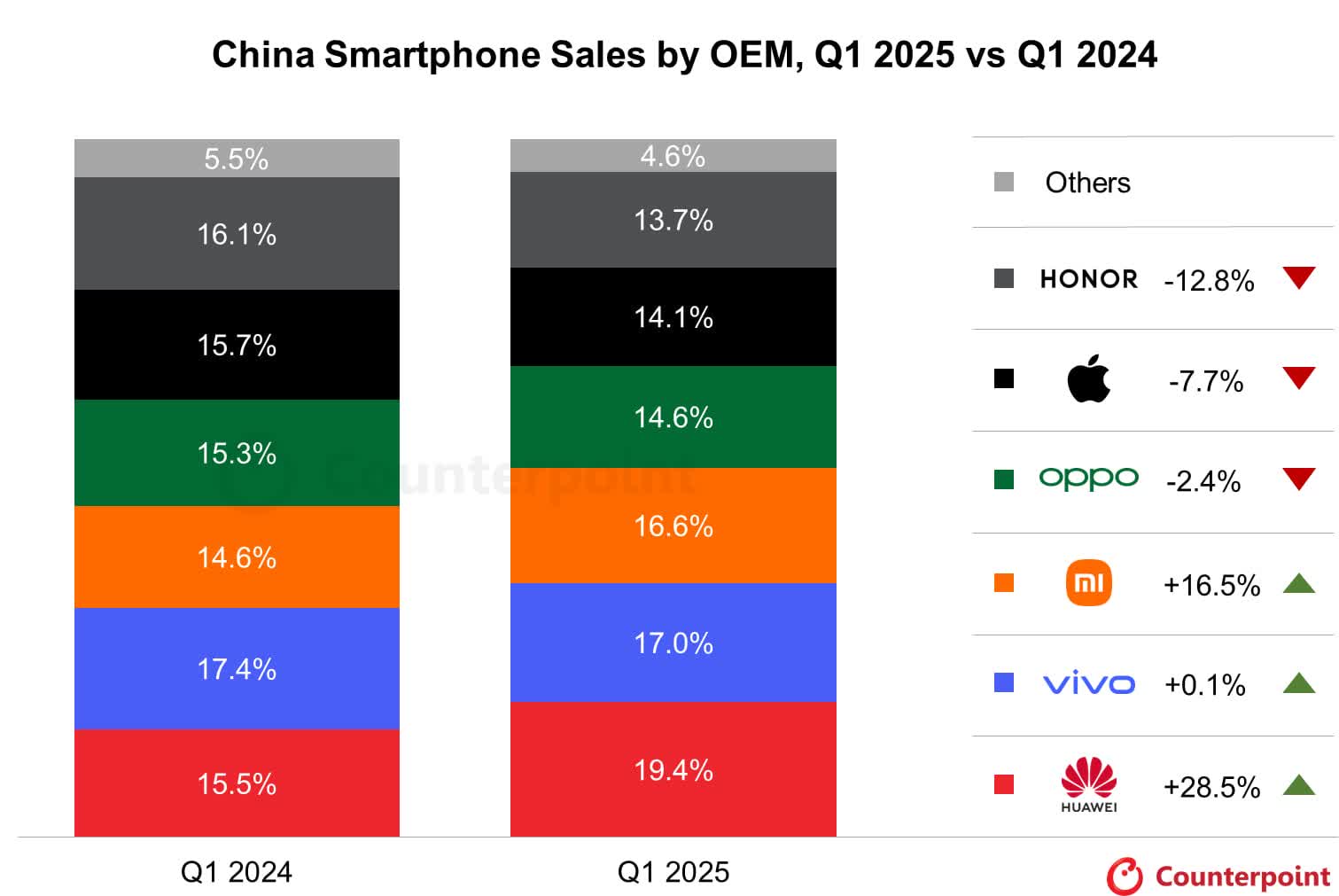What just happened? Apple is facing more problems with China, and not just those related to Trump's tariffs. Shipments of non-Chinese handsets in the country – of which iPhones make up the majority – fell by almost 50% in March, despite overall smartphone shipments increasing.
Apple has long been one of the few western companies to enjoy success in China, but the popularity of its iPhones in the Asian nation is waning as local brands experience growth.
According to figures released by The China Academy of Information and Communications Technology (CAICT), shipments of foreign handsets in China fell to just 1.89 million units in March, down 49.6% compared to the 3.75 million units that shipped during the same period a year earlier.
For the entire first quarter of 2025, shipments of non-Chinese brands of smartphones fell by over 25%. However, total smartphone shipments increased by 3.3%.
It means that Apple's share of the Chinese smartphone market has crashed to just 8% as domestic brands control 92% of all shipments.
According to Counterpoint Research's sales (not shipments) report from April, US-sanctioned Huawei maintained its lead as China's top smartphone company in Q1 with a 28.5% sales increase to reach its highest ever market share since 2021 (19.4%). It was followed by Vivo (17%), Xiaomi (16.6%), and Oppo (14.6%). Apple was in fifth place with a 14.1% share.
Part of Apple's misfortunes is coming from the Chinese government. China launched a nationwide 15 % "buy-new" subsidy for digital devices priced under 6,000 yuan in January 2025. If you buy a phone, tablet, or smartwatch in China for less than 6,000 yuan in 2025, you can claim 15 % off (up to 500 yuan) once per category, thanks to Beijing's consumer stimulus package. Apple's standard iPhone 16 starts at 5,999 yuan, but it is considering dropping the price of some Pro models ahead of China's 618 shopping festival to encourage buyers.
It's believed that Apple's more cautious approach to integrating AI into its devices has also had an impact on Chinese sales. There's also the Trump tariffs on imports from the country, which has led to some anti-US sentiment among the Chinese public and preference for local brands.

